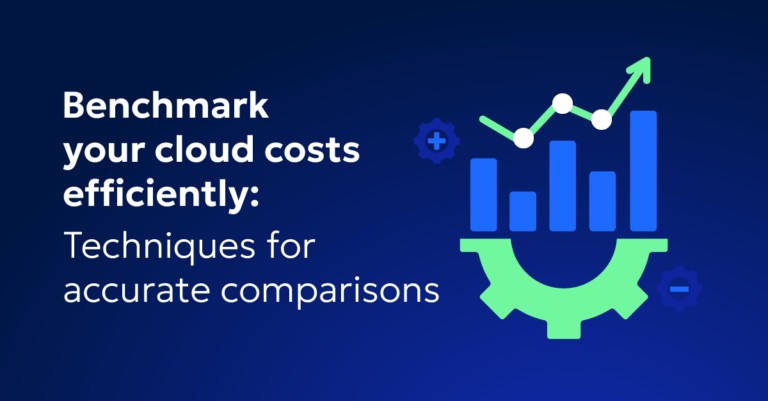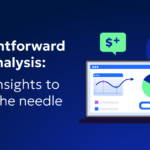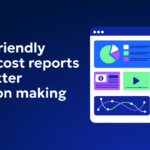
Benchmark your cloud costs efficiently: Techniques for accurate comparisons
Navigating the complex landscape of cloud costs can be overwhelming, especially with the myriad of options and the constant pressure to optimize costs while maintaining performance. The fear of overspending, underutilizing resources, or falling behind competitors is a common concern for many FinOps professionals. After spending over a decade managing and optimizing cloud costs, I understand these challenges all too well. This article aims to provide you with practical guidance on how to benchmark your cloud costs efficiently and make accurate comparisons that can drive better decision-making.
Start with clear objectives
Before diving into the benchmarking process, it’s essential to define what you aim to achieve. Whether it’s reducing overall costs, improving resource utilization, or staying competitive within your industry, having clear objectives will guide your benchmarking efforts and make your comparisons more meaningful.
Personal experience
When I first started benchmarking cloud costs for my organization, we were flying blind without clear objectives. We quickly realized that without a specific goal, the data was overwhelming and difficult to act upon. Defining our objective to reduce overall cloud spending by 20% within a year gave us a clear target and made our efforts more focused and effective.
Collect comprehensive data
To make accurate comparisons, you need detailed and comprehensive data about your current cloud usage and costs. Use cloud management tools to gather this information efficiently.
Use cloud management tools
Tools like AWS Cost Explorer, Azure Cost Management, and Google Cloud Cost Management can help you collect and analyze data about your cloud usage and spending patterns. These tools offer granular insights that are crucial for accurate benchmarking.
Personal Tip: In my experience, AWS Cost Explorer was a game-changer. By using it to drill down into our spending patterns, I discovered that a significant portion of our costs came from unused reserved instances. Addressing this alone saved thousands of dollars annually.
Identify benchmarking KPIs
Choosing the right KPIs is vital for meaningful benchmarking. Some key metrics to consider include:
- Cost per User/Instance: How much you’re spending per user or instance.
- Utilization Rates: The percentage of resource utilization compared to what is provisioned.
- Operational Efficiency: Costs associated with managing and maintaining your cloud infrastructure.
Personal insight
Initially, I focused too broadly on total spend, missing critical insights. By shifting the focus to cost per instance and utilization rates, I identified specific inefficiencies. For example, our utilization rates were only at 50%, meaning half of our resources were underused. Optimizing this metric alone led to a 15% cost reduction.
Compare with industry benchmarks
Using industry benchmarks allows you to understand how your cloud costs stack up against others in your field. Research reports from Gartner, Forrester, and IDC can provide valuable benchmarks.
Utilize industry reports
Refer to comprehensive industry reports that provide benchmarks for cloud spending and usage within your sector. These reports can highlight areas where you might be overspending or underutilizing resources.
Personal Tip: Regularly reviewing Gartner’s cloud spending reports helped me realize we were spending 30% more than the industry average on storage. This insight prompted me to optimize our storage strategy, saving $50,000 annually.
Perform regular audits
Regular audits are crucial to maintaining efficiency and ensuring that your cloud usage aligns with your benchmarks. Schedule quarterly or bi-annual audits to review and adjust your cloud strategy.
Implement a structured audit process
Develop a structured audit process that includes a checklist of items to review, such as unused instances, misconfigured services, and compliance with cost-saving measures.
Personal Insight: When I was leading a cloud optimization team, we conducted quarterly audits to identify inefficiencies. One audit uncovered several orphaned resources that were costing $10,000 a month. Regular audits have since become a cornerstone of our cost management strategy, leading to continuous savings.
Leverage peer comparisons
Engage with other FinOps professionals and share experiences. Peer comparisons can offer practical insights and strategies that might not be apparent from tools and reports alone.
Join FinOps communities
Participate in FinOps communities and forums where professionals share their benchmarking experiences and strategies. This peer interaction can provide fresh perspectives and practical tips.
Personal Tip: Joining a FinOps community, fx. the FinOps community slack group, was incredibly beneficial. By sharing my cost challenges and solutions, I learned about innovative strategies from peers, such as implementing cost anomaly detection, which helped me proactively manage unexpected cost spikes.
Implement cost optimization strategies
Based on your benchmarking data, implement targeted cost optimization strategies. These may include:
- Rightsizing: Adjusting instance types and sizes to better match workload requirements.
- Reserved Instances and Savings Plans: Leveraging long-term commitments for cost savings.
- Automated Scaling: Using automated scaling to align resources with demand dynamically.
Personal experience
Implementing a mix of rightsizing and reserved instances drastically improved my cost efficiency. For example, shifting 60% of our on-demand instances to reserved instances saved $200,000 annually, while rightsizing our remaining instances reduced costs by an additional 10%.
Continuous improvement for sustained success
Benchmarking is not a one-time task but an ongoing process. Continuously refine your benchmarks, adapt to new data, and update your strategies to maintain cost efficiency.
Stay agile
Adopt an agile approach to your cloud cost management, regularly reviewing and adjusting your strategies based on the latest data and industry trends.
Personal Tip: Continuous improvement has been key to our success. My team and I hold monthly review meetings to discuss our latest benchmarking data and cost optimization strategies. This iterative process has led to a 25% overall reduction in our cloud costs over two years.
Navigating your cloud cost benchmarking journey
Benchmarking your cloud costs efficiently is a vital practice that can significantly enhance your cloud strategy. By starting with clear objectives, collecting comprehensive data, identifying the right metrics, comparing with industry standards, performing regular audits, leveraging peer comparisons, and continuously optimizing, you can make informed, confident decisions that optimize costs and performance.






